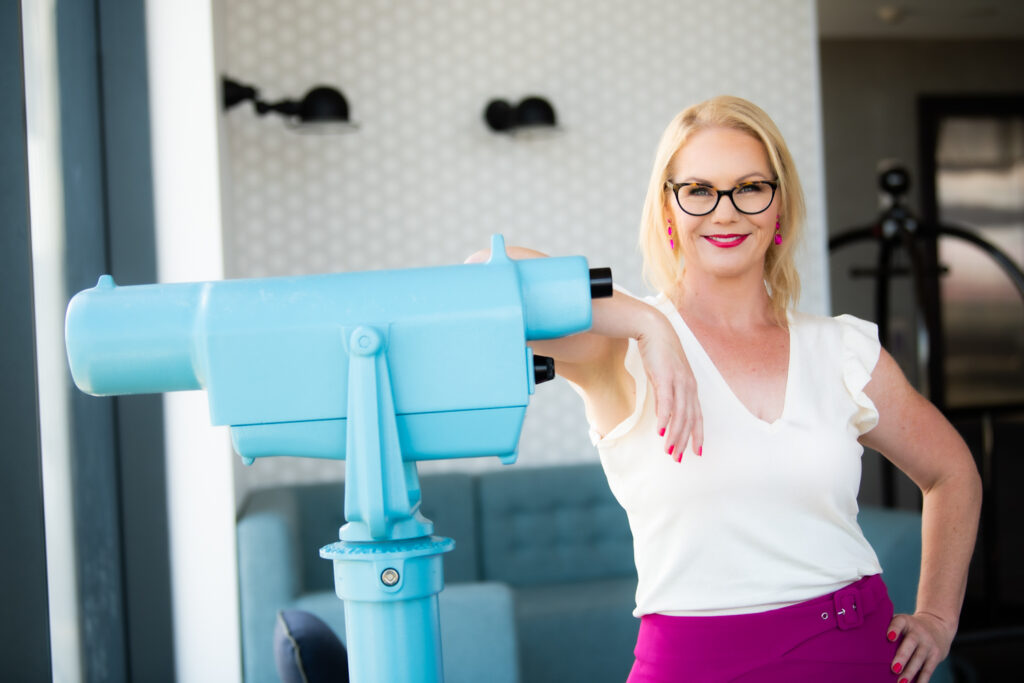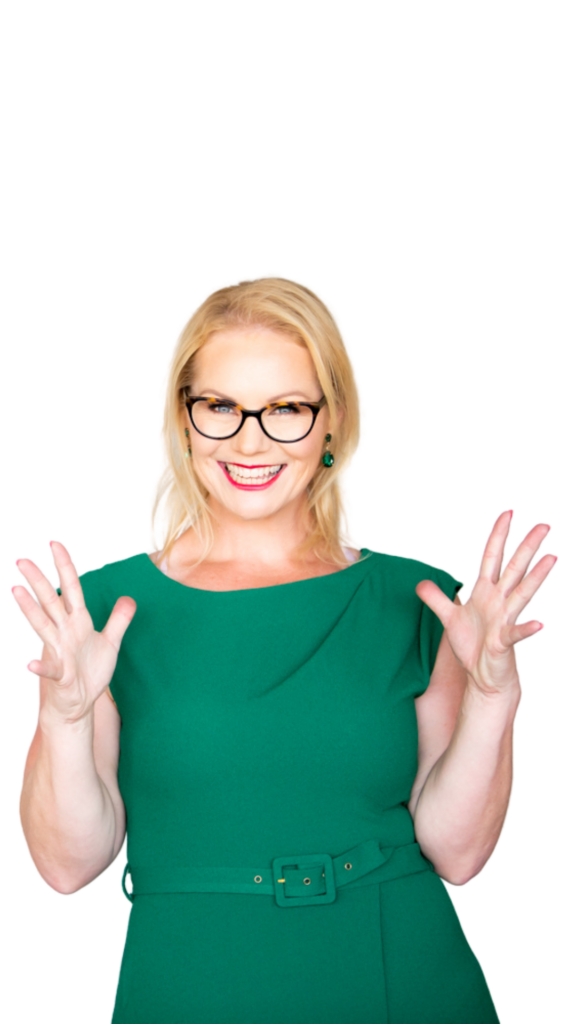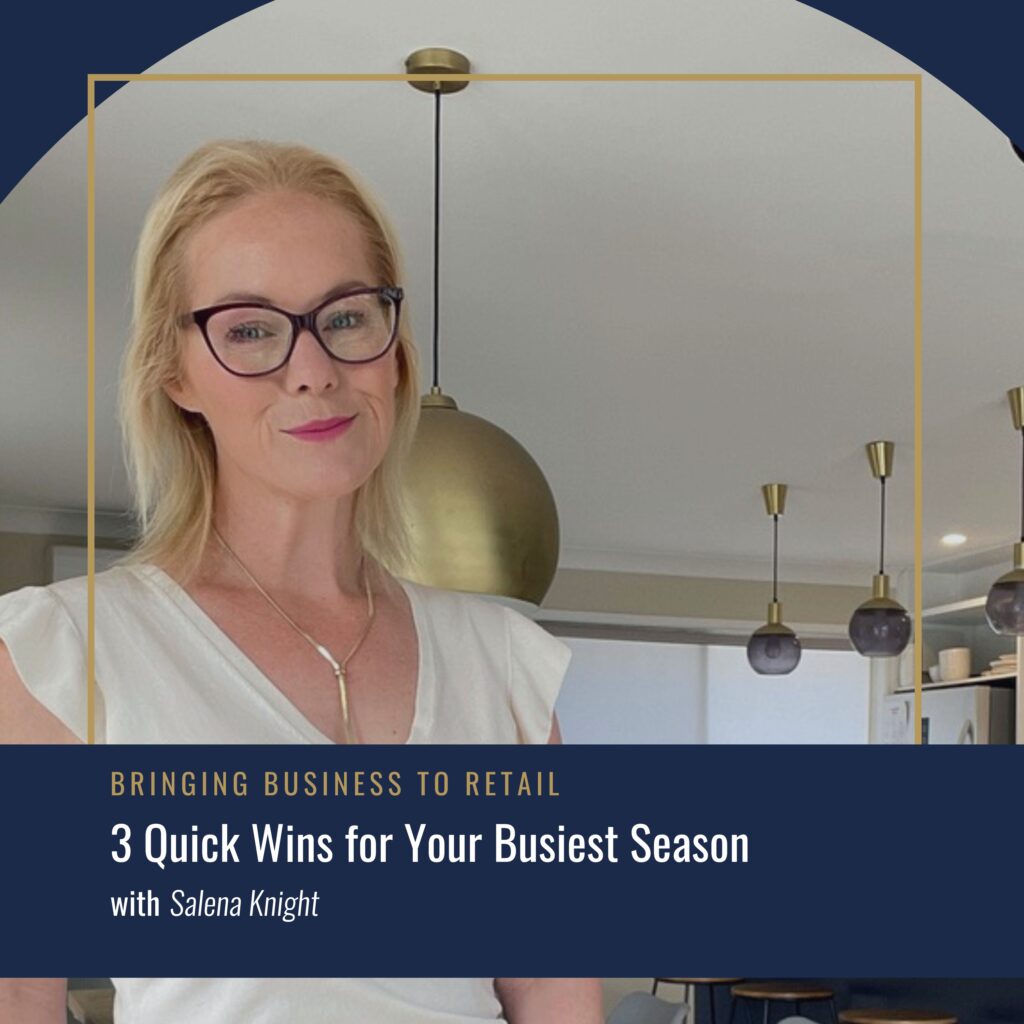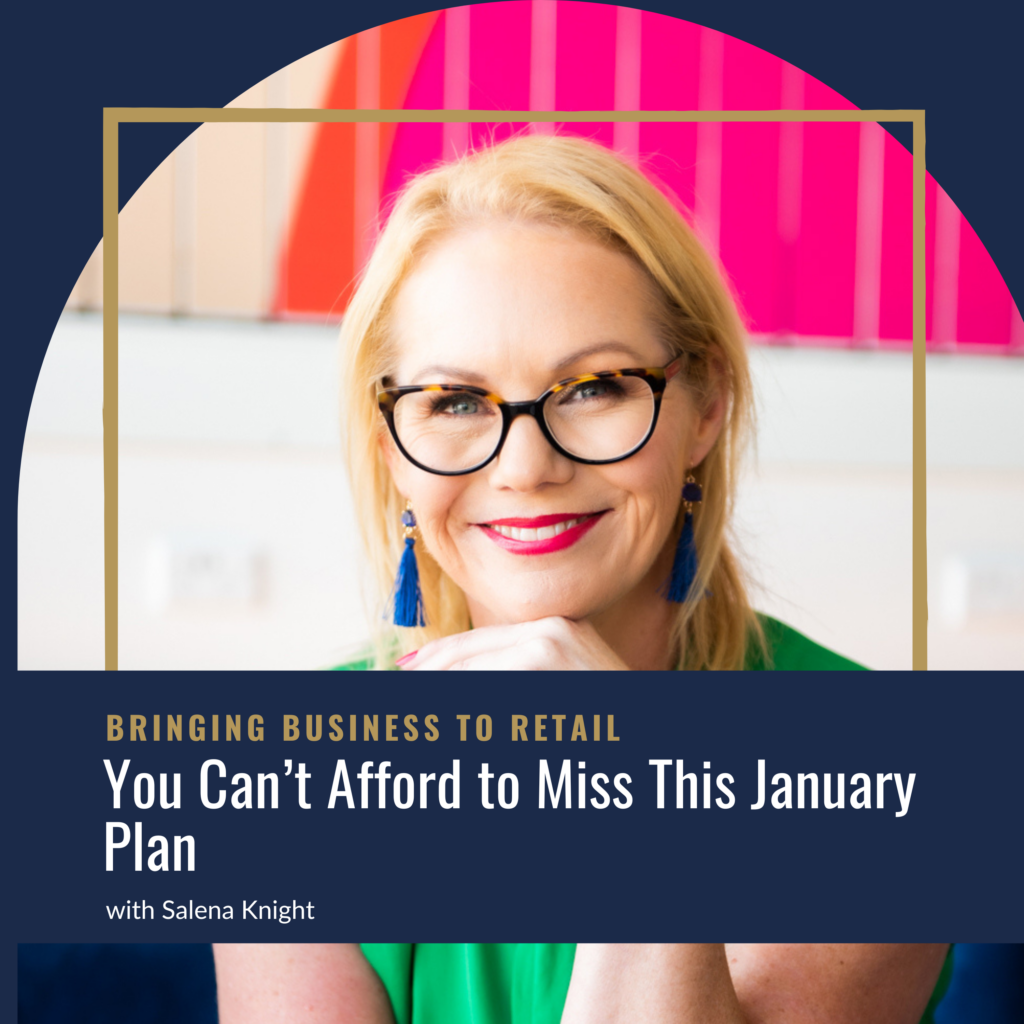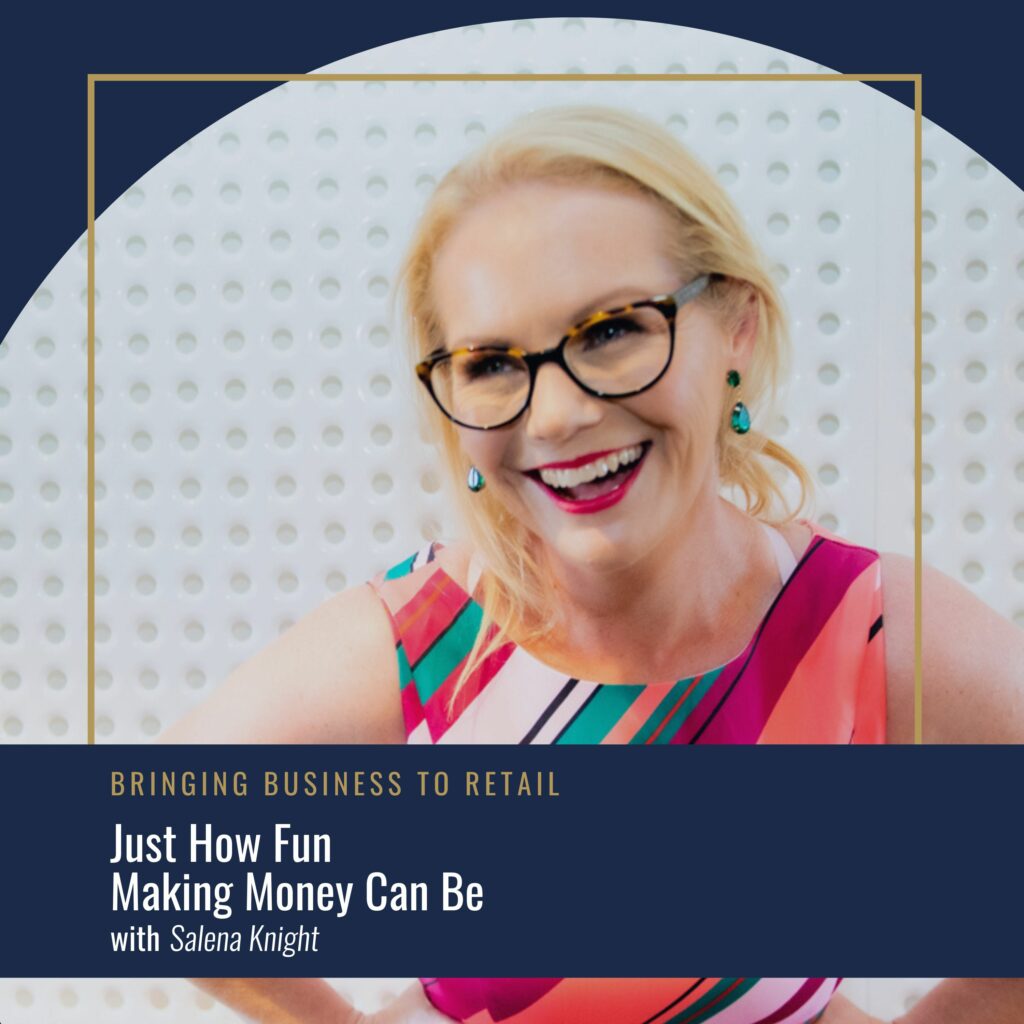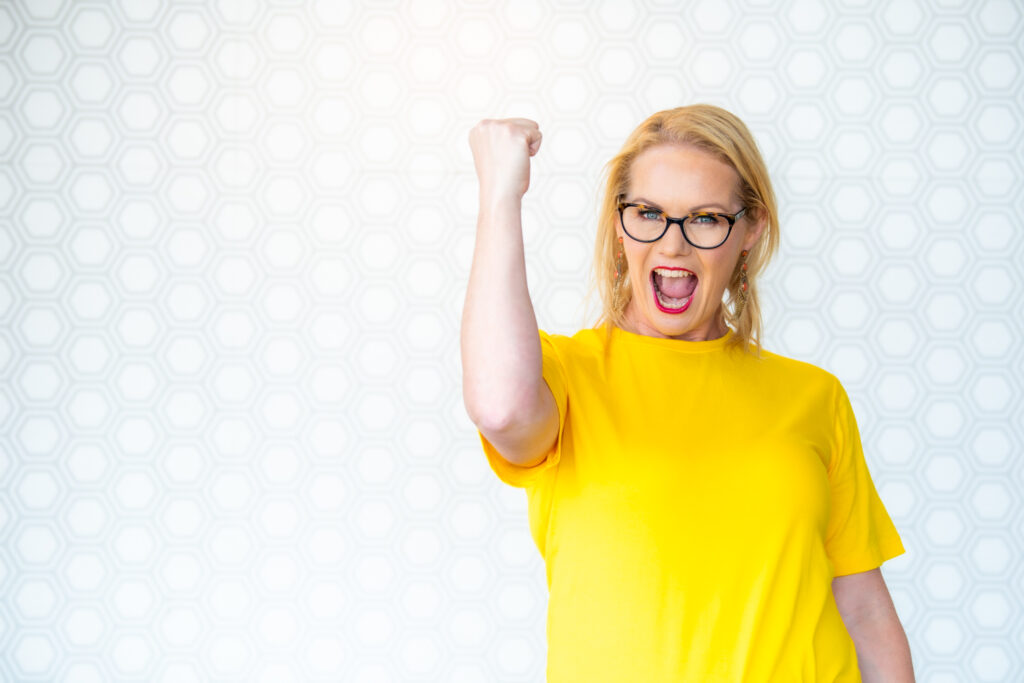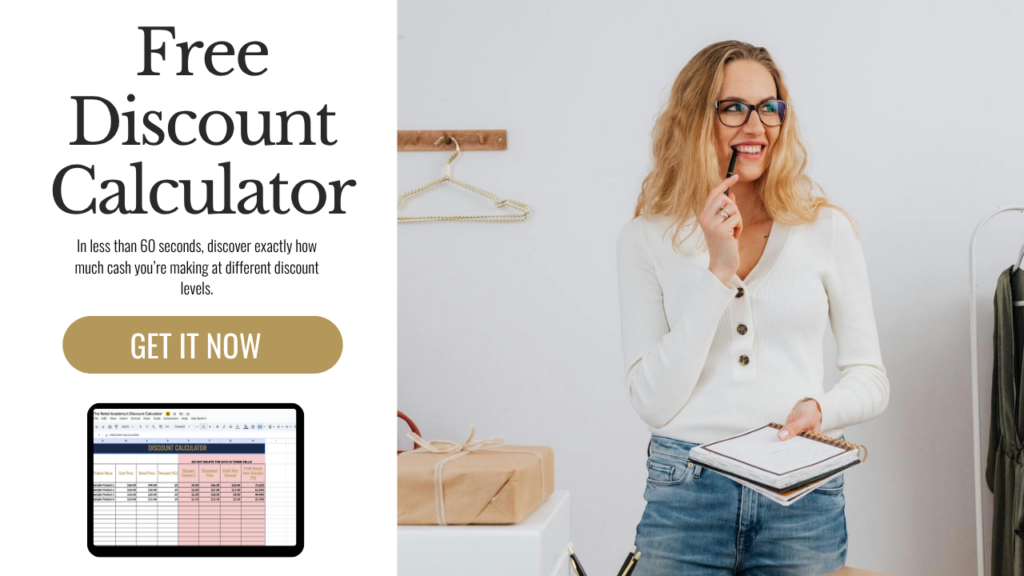
SHOW NOTES
What does scaling past eight figures really allow you to achieve? Sure, more money and more freedom, but also… the ability to go shopping without checking the price tag.
In this episode, I’m getting real about the sales strategies that most retailers aren’t using—but absolutely should be. These are simple, psychology-backed tactics that don’t require huge budgets, fancy software, or dancing on TikTok.
Here’s what you’ll learn:
– How to use Price Anchoring to make your products feel like a no-brainer
– The Purchase Timing Strategy that gets customers to buy again before they even realize they need to
– The underrated power of the Post-Purchase One-Click Upsell—and why it’s a total game changer for your profits
These aren’t sleazy tactics. They’re proven methods used by the biggest brands in the world, adapted for independent retailers like you.
If you’ve ever felt like you were leaving money on the table, this episode will show you exactly how to fix that.
Grab your notebook because you’ll walk away with actionable strategies you can implement today.
Sal
LISTEN NOW on The Bringing Business To Retail Podcast
I was asked the other day, what does scaling past eight figures allow you to achieve? And I knew the answer straight away. It's something that I have struggled with my whole life. In fact, it was the first thing that I thought to write, but it seemed so silly. I typed it in and then I deleted it. Now, of course, there are the obvious answers, more money, more freedom, the ability to give back more, retire my husband, change the world in my own special way.
But there was just this one little thing that I wanted to write, and so I added it in. I deleted it eventually, I thought, what the heck? Writing it down isn't going to end the world. So what was this sneaky little answer to? What does scaling past eight figures allow you to achieve? It's probably not what you think.
It's actually, like I said, pretty silly is what I wrote. Maybe just maybe. I will be able to go shopping without looking at the price tag. I know silly, right? Because I am in a position where most of the time I can afford to buy what I want to buy. Like I don't shop in the Gucci store. I grew up poor. I. So the stores I do go to are the ones I'm pretty confident that whatever I pick up I can afford to buy, but still I look at the price tag and I go through a mental battle of justifying whether I should purchase it or not.
So what's this got to do with money making strategies or quite simply, as humans, our brains work in mysterious ways and you will never know what somebody is thinking when they purchase from you. What we can do is use psychology backed data, supported real world strategies that can seriously shift the needle in your revenue.
There are some powerful sales strategies that most independent retailers aren't using, and I'm going to share three of them with you today if we haven't met before. Welcome to the Bringing Business to Retail podcast. I'm Selena and I, and I create solutions that make money for retail and e-commerce stores.
Now, the strategies I'm going to share with you aren't complicated. They don't even require a huge budget, and they definitely don't require any TikTok dancing. What they do need is your understanding, your customer's psychology, and then implementing some smart systems. And by the end of today's episode, you are going to have three concrete strategies that you can start implementing immediately to boost your sales.
So grab your coffee, your notepad, and let's jump in. Alrightyy, let's get straight into number one, and this one is pure psychology gold. It's probably one of the most powerful sales techniques that you don't even realize that big brands are using. Let me recount what I think is the most influential use of this strategy that we've seen.
Now, I want you to think back to when Apple first launched the iPad. 2010 I think it was. Steve Jobs got up on that stage and he spent over an hour going through all of the incredible features, the high resolution screen, the revolutionary touch interface, all of it. And then he stepped back and he asked the audience, how much do you think this revolutionary device should cost?
And he put up a big, bold $999 on the screen. And that number just sat there burned into everybody's minds. But here's where the magic happened. He then announced the actual price, which at the time was $499. The audience was stunned because in their minds, they were already prepared to pay $999. So $499 felt like they were getting an incredible deal.
This my friend, is price anchoring in action. It is our tendency as humans to rely on the first piece of information that we receive to make further decisions. And when that higher price is presented, first it becomes the benchmark against which we evaluate everything else. Think about it like house hunting.
The first house that you ever see becomes your measuring stick for every other house, right? The same principle applies to retail. Here's the thing, Steve Jobs didn't just stop there. Oh no, no. Way too smart for that. He then showed three options, the 16 gig model for 4 99, 32 gig model at 5 99, and the 64 gig, which was the biggest at 8 99.
Notice something, even the top of the range model was still cheaper than that original $999 anchor. So buying the premium version felt like a no brainer. And for Apple, the difference was just a storage card. The cost between the basic and the premium was virtually nothing. But by anchoring it at $999, apple could sell the 8 99 model and still have customers walk away feeling like they got amazing value and Apple made a much higher margin.
So you might be thinking, well, that's great for Apple Sell. That's a big brand. They have a big budget. How do I put this in place in my store? Let me give you some real world examples, some real life sale examples. Let's say that you walk into a clothing store. I'm giving you this example from experience.
Let's say you walk into a clothing store and the first pair of jeans that you see is $499. Now, I don't know about you, but I have never paid $499 for a pair of jeans in my life. But here's what happens when you then see a wall of jeans for $199. Those jeans immediately seem reasonable. In fact, they almost seem cheap.
'cause you already benchmarked those jeans against the store. The first ones you store as you walked in the store at $499. Now maybe 1 99 was more than you were planning on spending when you first walked in on a pair of jeans. But now that you have the $499 frame of reference, all of a sudden 1 99 feels like a steal.
And so you walk out having spent more money than you planned, but you feel great about the value that you've got. Let me show you how this works in e-commerce, because you might be thinking, well, I get it in a physical store, but how does this work online? First of all, product order matters, so on your website you might be using the default, which might be random products, or it could be the lowest product price first, but.
You could try using featured products or you could sort your products by price descending as your default view. Now, customers can always change this on the front end, but remember, you are trying to get those high value products to set the benchmark. I tested this out on a few big brand sites. I did Nordstrom, and the first four dresses I saw were one ninety eight, one hundred and sixty eight, and then there were two cheaper options, but of course my eye was immediately drawn to the $198 dress.
So boom, there's my benchmark second, and this is my favorite. You can try using base pricing with different options or packages, so. Supplement companies are really good at doing this. I went to the website on it and they show their probiotics at, I think it was like $79, but then the default to a subscription is $65.
So the higher price anchors the value, but the subscription feels like a really great deal. And you know what? As retailers, we all love monthly recurring revenue, so it feels like a win-win. And then the third way that you can do this is by comparing against a premium version. So again, go to big brand websites because they do this so well.
I went to the Dell website and I looked at tablets. The first option was 7 98 and then 5 48 and then 424. So the difference between 7 98 and 5 48. Quite big, but between 5 48 and 4 24, not that big. So guess which one they probably sell the most of. Yeah, the middle one, the 5 48, because it feels like that sweet spot between expensive and cheap.
Here's why this works so well. As humans, we are indecisive. So by having that anchor, that benchmark, it helps us make decisions faster. It validates our choices, and it breaks down the barriers to purchase. So instead of walking away, because we actually can't decide. We buy something. Most customers want to avoid risk, so they don't usually buy the cheapest or the most expensive option.
They go for the one in the middle. That's the best value to them. So by having those outliers, it actually helps you sell more of the mid-range product. Hmm. Intrigued. Well, here are my quick tips for price anchoring. One, you should be doing it, but two, don't artificially inflate prices because customers can see right through that, especially if we're talking about online.
Also, test different strategies to see what works for your specific customers. Just because it works for one person doesn't mean it will work for the people who shop with you. And then, and I've mentioned this a few times, study how big brands in your niche use price anchoring. They have spent millions of dollars on research, so learn from them.
The key thing to remember is that even if you don't sell large quantities of those high priced items, simply by having them gives your customer that crucial benchmark, and that dramatically increases both your conversion rates and your average order value. Okay, so price anchoring. Check. Let's move on to strategy number two.
And this one is all about timing. I call it purchase timing strategy. It kind of does what it says on the box, right, and it's all about understanding exactly when your customers are likely to reorder sometimes before they even know it themselves. Now, this isn't just about sending random, Hey, buy some stuff, emails.
This is about becoming so tuned to your customer's purchase patterns that you can predict their needs and be there with them in front of them. Putting the perfect offer at the exact right time. Think about it. Every product in your store has a lifecycle. Some customers are going to go through a tube of skincare in 30 days, but others might take 60 days.
Some people will need to restock their pet food every three weeks. For me, it's every month. The magic happens when you can identify these patterns and reach out with a timely offer before they run out. So here's my story. I moved our dogs to new food because they weren't, they were reacting to the old food, and I didn't go on subscription to begin with because I didn't know.
How long the bag would take. And I didn't for them to get through and I didn't know how they would react. But guess what? I ran out. Yeah. Which caused all kinds of problems. So if we can't get our customers to sign up for a subscription, the next best thing is to remind them of what they need. So let me break this down into two categories 'cause it seems a little bit easier to understand for those more consumable products.
So consumables, things like skincare, supplements, pet food, coffee, protein, powder, cleaning supplies, all of those types of things are goldmines for purchase timing because you can kind of predict how long it's going to take for somebody to get through them. So if you're selling skincare products, if a customer buys a 30 mil moisturizer, that typically lasts for six to eight weeks with regular use, instead of waiting for them to remember to reorder.
And possibly going to a competitor because they need it right now. You might reach out at week five with a, Hey, are you running low? Kind of email that includes a reorder button. Here's where it gets really smart. You don't just send the one email, you create a sequence. So at week five, you might send an email that says, Hey, how's your skin feeling?
Is it time for you to reorder? In week six because now you know that there's a good chance that they're running out. You might send an email that says something like, Hey, don't let your skincare routine break reorder now. Now we're getting to the point where there's a good chance that if they haven't already run out, they're getting very close.
So at week seven, you might send an email that says, last chance before you run out. In week eight where there's a good chance that they've already finished using the product, the email might be something along the lines of, oops, did you run out? Get back on track. Now, I have seen retailers increase repeat purchases by 40% just by implementing that kind of timing based email sequence.
As a retailer, you can pretty accurately predict when your customer is going to need different types of consumables so you can set up those automated emails to go out to offer convenient reordering. So consumables kind of easy. Let's talk about habitual purchases. So these are a little bit trickier, but it is incredibly valuable when you get them right.
These are things like fashion, gifts, seasonal items, or even something like business supplies. Fashion is fascinating because while people don't run out of clothes, they're definitely buying patterns. Some people might buy new workout gear every three months, or maybe they'll refresh their work wardrobe twice a year.
The key is to identifying those patterns in your customer data. I worked with a boutique and we noticed that customers who bought the spring collection. Typically came back for summer pieces around about 10 weeks later, and so they created a sequence of emails that went out called Summer Style Preview, and that went out at week seven or week eight, and it started showcasing new arrivals and offering early access, or I think they even AB tested with a styling consultation.
It's meeting your customer before they need the product. The other thing that this works extremely well on is corporate gifts. I love that they're so predictable. Companies that send holiday gifts to clients, pretty much gonna do it again next year. So set up a reminder system to reach out in October about holiday gift planning for customers who purchase corporate gifts the previous year.
So now how do you actually implement this? You don't need fancy AI or expensive software. I mean, email flows are your best friend. Most email systems like Klaviyo or even Shopify email can set up automated sequences based on purchase dates, create the email. Once set the timing, they run automatically. I.
You can also use your CRM, your POS or customer data, so track when customers make purchases, and then set reminders to reach out before they're likely to restock. You can just start simple. Grab your top five to 10 products and start there. Better off. Get your five to 10 most best selling consumable products if you have them.
And start with those and pay attention to those seasonal patterns. Maybe people buy your supplements in January because they're doing a New Year's resolution, but then they don't buy again till April or May because they haven't actually been taking them consistently. Use that data. My friend. Data is your friend.
So here's a simple framework to get you started. If this is something that you want to put in place, identify any consumable products that you have. And estimate usage timeframes. Then set up that automated email sequence to go out at 75% of the expected usage time. Then track, track, track, track, track the actual repurchase patterns and adjust your timing if you need to.
And I always love to create urgency and convenience in those reorder emails. You're probably gonna have to test out different messaging as well, because sometimes it might be about running out. Sometimes it might be about maintaining results, so something like vitamins. It might be about maintaining results more than it is about running out.
The beauty of this strategy is that it feels helpful, not pushy. You are providing a valuable service for someone like me. If you remind me that I'm about to run out, I am thanking you for it. So you're not being pushy, you are helping. So here's a pro tip. If this is something that you're going to implement, segment your reorder emails based on purchase behavior.
What I mean by that is first time buyers might need a little bit more education about product benefits, but people who've purchased a product in the past just need a convenient button to to reorder, to click, go add to car, buy Now, this is a lot, right? But these are sales strategies that. Too many retailers just don't use.
So we covered off price anchoring where people are gonna happily pay you more and feel like they've got great value in the process and purchase timing. We have one more left, and this one might just be the biggest missed opportunity in retail. It is the post-purchase one click upsell. Now before you roll your eyes and think, oh, great, another pushy sales tactic.
Hear me out on this one. This isn't about being sleazy or aggressive. It's about understanding some really fascinating psychology and offering genuine value to customers who have already decided that they're going to buy from you. Here's the thing, the moment right after someone makes a purchase is actually the perfect time to make another offer.
And there is psychology that backs this. There's this thing called the commitment and consistency principle. So once people make a decision, especially one that involves money. They want their future actions to be consistent with that decision. So they've just committed to being someone who buys from your store.
So making another purchase just reinforces that identity. But that's not all. There is another thing that psychologists call decision fatigue. This is something I suffer a lot from. So think about it. They've just gone through the entire decision making process. They've compared options, they've weighed the pros and cons.
They pulled out their credit card. If they're me, they've gone through the mental battle of should I buy this thing or not? I've entered all my details and I've purchased, so the mental heavy lifting is done. Making one more small decision feels effortlessly compared to starting a whole new shopping journey, but this is why I love this strategy.
There's even more, but wait, there's more. There's this thing called the endowment effect. And that's the moment when someone makes a purchase that they start feeling ownership of their product. Have you ever felt this? I know I do. I can't wait for it arrive because I feel like it's mine. So research shows that once we start to feel like we own something, we are motivated to protect that investment.
So offering accessories or complementary products actually taps into our desire to maximize the value of what we've already committed to. The really interesting part for me is that neurological component. When we make a purchase, something works in our brain and it releases dopamine. So we are literally in a good mood when we have this purchase.
We are in this positive emotional state. This is why people can become addicted to shopping because that purchase sends a dopamine hit. I'm not saying that we are going to try and get the shopaholics in, but we're using psychology to help us sell more. So if we know that people are in a positive, happy state after they've purchased, why wouldn't we want to leverage that?
So the crucial difference between a post-purchase upsell and those really annoying popups that you see during checkout is timing and relevance. So we're not talking about interrupting the purchase process, which can quite often happen during the checkout process. What we're talking about is they get through the checkout, they've already entered their credit card details and they've paid so they're feeling good about their decision.
That is when we put another offer in front of them. So let me give you some real world examples of how this has played out for me. I bought some premium skincare serum and instead of just showing me a basic thank you for your order page, I actually had an offer which was something along the lines of, Hey, you clearly care about your skincare routine.
Add a Silk pillow case for just $29. It's going to help your skincare work better, and it prevents hair tangles. Something along those lines. This offer expires in 10 minutes. The marketer in me absolutely loves that. The key elements to make this offer work is that one, it was relevant. It talked about my skincare, it talked about my hair tangling.
The upsell that you put in place should compliment what they've already purchased. It should make sense to them. On the surface, maybe the pillowcase didn't make sense, but actually when I read it in conjunction with the fact that it was going to help my skincare and it was gonna help my hair, it did make sense.
The second thing is convenience. One click purchasing. Is usually something that you can add in with no additional shipping costs or no additional checkout process. The friction needs to be minimal, and it is literally you've already paid. You click the button, it gets added to your order. Now, the other thing that these guys did well was that time pressure.
So on that page, it actually said the offer was only available for 10 minutes. So having a genuine deadline creates urgency. But you've gotta stick to your guns here. No. Yeah, yeah, yeah. You can add it in. And when somebody messages and you said, Hey, I didn't take advantage of that offer. Too bad. So sad, my friend.
So maybe you might use something like add to your existing order so that you don't pay additional shipping. And then the value of the offer should enhance the original purpose. So you might be thinking, well, this sounds really, really complicated Sell. How do I set this up? The good news is there's always an app for that, right?
If you're on Shopify, you've got apps like Rebuy or Zipify One Click Upsell, or Reconvert. They're gonna handle all of the technical side of these things. These are the kinds of tools that create your post purchase offer pages that appear after checkout, and allow customers to just do a one click to buy.
Remember, it only works if you do it right. Offer needs to add value. You can't just be doing this to try and squeeze extra money out of your customers because they're going to see through that. Some of the best practices that I've learned because I actually do this. If you've ever purchased from me, you will see that I have a post-purchase upsell in nearly all of my checkout processes.
So the first one is, keep it simple. Don't overwhelm customers with multiple offers. You my friend, are not Vistaprint. Okay? You don't have multiple offers, don't have complicated choices. Have one clear, relevant offer. It was way better than three really mediocre ones. The second thing is always make sure it's mobile friendly, a huge percentage.
In fact, over 60% of e-commerce purchases are done on a mobile device, so your upsell page needs to work perfectly on a mobile device. And then I did just mention it, but make sure you honor that time limit. If you say the offer expires in 10 minutes, it needs to actually expire because that false urgency will backfire in the future, and it's going to erode all of the trust that they had with you.
And then of course, lastly, I always say this, track everything monitor, not just the people who take the offer up, but also how they affect customer dissatisfaction and your customer return rates. Here's something interesting post-purchase upsells offered have a much higher profit margin than the original purchase.
Think about it, if you've already covered your customer acquisition costs with that first sale, the upsell is pure profit minus the product cost. And then there's another psychological principle at work here, which is called loss aversion. People hate missing out on a good deal more than they love getting one, huh?
Yes. It's a thing when you frame your post purchase offer as an add this to your existing order to avoid paying shipping twice. See what I did there? Avoid paying shipping twice. That is you tapping into their fear of missing out. And customers often appreciate really well crafted post-purchase offers because they're convenient.
It is way easier to just add something to an existing order than it is to place a whole new order, especially what it means you're going to have to pay extra shipping costs. So this is the friction reduction. The beauty of this strategy is that it works for both online and offline retailers. In physical stores, you can train your staff to make relevant additional offers.
After the main purchase is complete. This is so counterintuitive, but I would say test it out. Maybe you sell cookware and you train your team to say, by the way, since you're investing in this really high quality cookware, would you like to add our premium cookbook that shows you how to get the most out of these pans?
It's normally $45, but you can add it to your purchase today for just $25. See what I did there. Now, you might have already implemented POS upsells before a customer checks out, but I'm throwing it out here. I'm gonna say try a post purchase upsell and see how it goes. You could even try both. When done right post-purchase upsells, enhance the customer experience and boost your revenue.
It is literally a true win-win. So let's bring this all back together and recap those three game changing strategies that I'm pretty sure you are probably not leveraging. And you can use them to boost your sales. The first one was price anchoring. Using that higher priced product to set benchmarks that make your offer and your other products feel like they are amazing value.
Remember, it's not about tricking customers, it's about giving them a frame of reference for them to be able to make confident decisions. Strategy number two was purchase timing. Understanding your customer's buying patterns or usage patterns and reaching out to them with timely offers before they run out or when they're likely to need to restock.
It's about being helpful, not about being pushy. And strategy number three, the post purchase, one click upsell. Capturing customers when their buying barriers are lowest by offering relevant, valuable add-ons immediately after purchase. What do you think? Are you using any or all of those? If not, here's what I want you to do right now.
Pick just one of these strategies. Whichever one resonated with you the most or seems the most applicable to your business, and just commit to testing it in the next two weeks. I would love to hear which strategy you are going to try first. Feel free to DM me on Instagram at the Celina Knight and tell me which one caught your attention and how you're planning to implement.
And if once you do, let me know the results. I read every message, and I love celebrating these wins with you. Remember, these aren't just theoretical concepts. They're literally proven strategies that work. They're strategies that I have put in place with the clients that I work with. The retailers who consistently grow their sales are the ones who understand customer psychology and use it to implement smart systems.
And now you, my friends, have got three powerful tools in your toolkit. Alrighty. Thank you so much for joining me here on the Bringing Business to Retail podcast. I look forward to catching up with you in the next episode. So that's a wrap. I'd love to hear what insight you've gotten from this episode and how you're going to put it into action.
If you're a social kind of person, follow me at the Selena Knight and make sure to leave a comment and let me know. And if this episode. Made you think a little bit differently or gave you some inspiration, or perhaps gave you the kick that you needed to take action, then please take a couple of minutes to leave me a review on your platform of choice.
Because the more reviews the show gets, the more independent retail and e-commerce stores just like yours that we can help to scale. And when that happens, it's a win for you, a win for your community, and a win for your customers. I'll see you on the next episode.
Share this episode
Watch The Video


